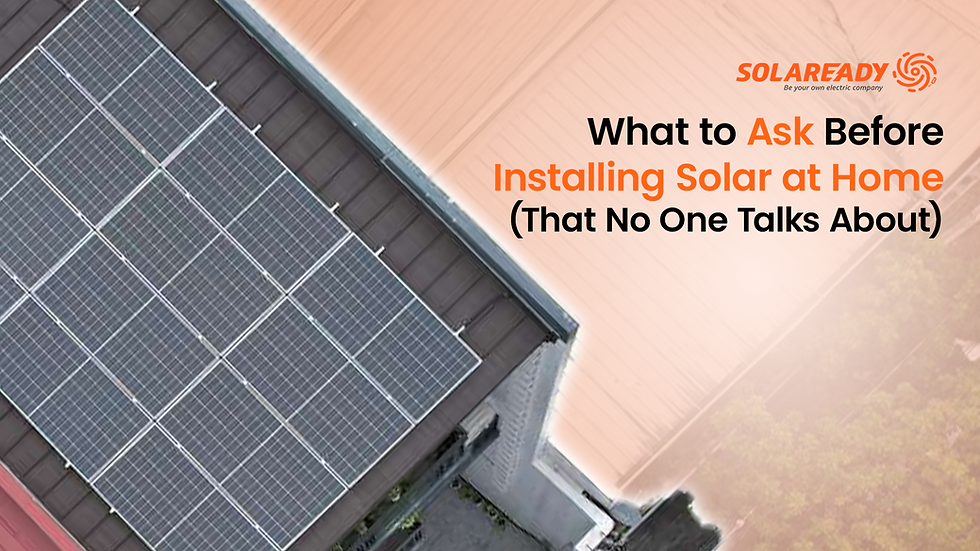Light-bulb Moment: Solar Energy and How Solar Panels Work
- Solaready PH

- Jun 4, 2018
- 2 min read
The sun has produced energy for billions of years and is the ultimate source of all of the energy sources and fuels on earth. The use of sun's energy has grown exponentially since the early days of human civilization. For thousands of years, people have used sunlight or sun's ray for warmth, to dry meat, and grow food and plants. Over time and advancement of technological capability, the sun's use has progressed to collecting solar energy for conversion into electricity.
Capturing Solar Energy
Collecting solar energy has some pretty early recorded beginnings. French-Swiss scientist Horace de Saussure is first reported to use glass "hot boxes," a device that traps solar heat for cooking, in 1767. Now in modern times, people use different technologies for collecting and converting sun's rays into useful energy for various purposes—one is to generate electricity through solar photo-voltaic (PV) systems.
Converting Sunlight into Electricity
Solar photo-voltaic (PV) devices, or solar cells, absorbs sunlight and transforms it directly into electricity. Small PV cells can power watches and other small electronic devices while an installation of many solar cells in PV panels and arrangements of multiple PV panels in PV arrays can produce electricity for an entire house. Some PV power plants have large arrays covering large areas of land to produce electricity for thousands of homes.
Solar Panels for Homes

Solar panels take in the sun's energy during the day and convert it into direct current (DC) electricity. Most homes and businesses run on alternating current (AC) electricity, thus the DC electricity is first passed through an inverter to convert it to usable AC electricity. AC energy then flows through the home’s electrical panel and is distributed accordingly.
A standard solar panel is made up of a layer of silicon cells, a metal frame, a glass casing and various wiring to allow current to flow. Silicon is the nonmetal semiconductor material of choice as it absorbs and converts sunlight into electricity while it forms a unique oxide on the surface when heated to high temperatures. When light interacts with a silicon cell, it causes electrons to be set into motion, which initiates a flow of electric current. This is known as the “photo-voltaic effect,” and it describes the general functionality of solar panel technology.
Aside from silicon, a typical solar panel includes a glass casing that offers durability and protection for the silicon PV cells. It protects solar cells against harmful external factors, such as water, vapor and dirt. An anti-reflective coating can also be added to solar glass. The coating will improve transmittance by reducing the reflectance on the surface of the glass.
If you are a homeowner who would like a ballpark estimate for a solar installation, try our Solar Power Calculator that offers upfront cost and savings estimates based on your location and roof type. Inquire today and be your own electric company.





Comments